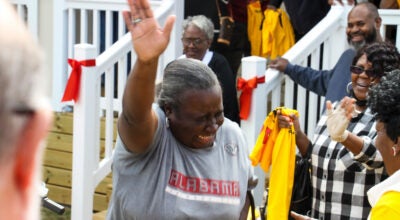Candidates: Job creation is a team effort
Published 12:34 am Sunday, August 12, 2012
Each month, the Alabama Department of Industrial Relations releases the unemployment figures for each county in Alabama, detailing the number of those residents in each county who are both working and those not working.
And, for what seems like generations, the counties in the central part of Alabama’s Black Belt, primarily Dallas, Perry, Lowndes and Wilcox counties, have been among the counties with the highest unemployment.
Recruiting industries and businesses — and their job openings — is the primary focus of local and regional economic development organizations, but it is not their job alone. As both candidates vying for the position of Selma’s mayoral position said, bringing in jobs to Selma and Dallas County is a team effort.
“The mayor doesn’t do it alone. The mayor has to work with the Economic Development Authority, the chamber, the county and the council — as well as the airport authority — to really be effective,” Evans said. “These are the groups that must work together to bring industries, these jobs to our area.”
Because most new industries are lured to an area by tax abatements, available property and training opportunities, Evans said each agency, each partner has a role.
“There’s not just one person — not the mayor alone — that can make all of this happen,” Evans said.
As for former Selma mayor James Perkins, he believes the role of the mayor in economic development is providing the energy to the recruitment effort, encouraging others to get involved in finding new industries and bringing in jobs.
“We have got to convince all of us that we are expected to be job ready, that we are expected to have a clean city, we are expected to recruit industry and it is not something that is going to happen by happenstance,” Perkins said.
Both Evans and Perkins said quality of life is a key component in the job development process, but Evans said it is also important for residents to know there are jobs available right now.
“I find people all the time who are surprised by the industries that we do have here and the fact that many of them are hiring. I tell them about the fact that we were able to save Bush Hog, and the new industries that have come in and are coming in,” Evans said. “I tell them there are jobs available to those who can qualify. Even our police department is hiring. They’re all the time looking for qualified candidates to fill positions.”
Perkins said efforts during his term to better market Selma — both within the city limits and beyond — proved valuable.
“We rebranded Selma, we changed our image tremendously, updated our marketing material and aggressively pursued getting Selma back on the economic development radar in the state of Alabama,” Perkins said. “We had to show them what we have.”
As for Evans, it comes back to make sure the environment for job creation is there, ready for when an industry or retailer comes calling.
“You want to try to have the environment naturally entices industry, business to come,” Evans said. “Working to try to have the right kind of atmosphere. As mayor, I work to make sure we have our people on board to have our city in position to impress potential industries with quality of life, the services we have.”
Perkins added residents also play a major role in the recruitment process.
“Educating residents that anyone they are engaged could be a potential prospect for our community is a crucial component to brining in jobs,” Perkins said. “We worked to reinforce that to our residents through marketing and through training.”
As a part of his campaigning, Perkins has highlighted that during his eight years in office, he helped create 2,000 jobs to Selma. And while that might be true, the number of employed in Dallas County fell over his eight years in office from an average of 16,643 to 13,767, a loss of 2,876 jobs.
The figures aren’t much better during the first three years of Evan’s term, where the number of employed in Dallas County has fallen from 13,767 to 12,687, a loss of 1,080 jobs.
Also, from 2000 to 2010, the number of people counted in the civilian labor force — the pool of Dallas County residents available for employment — has fallen from 17,926 to 15,368.




